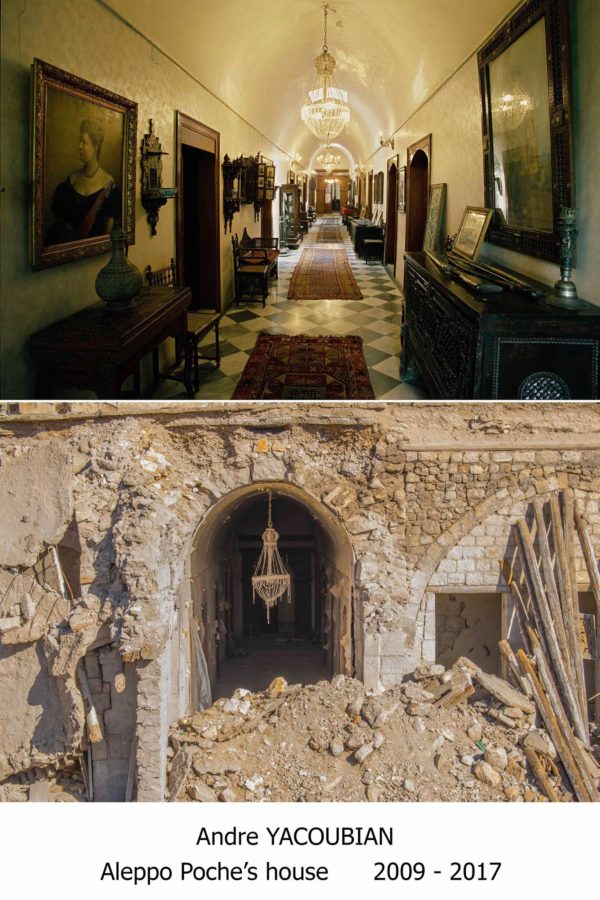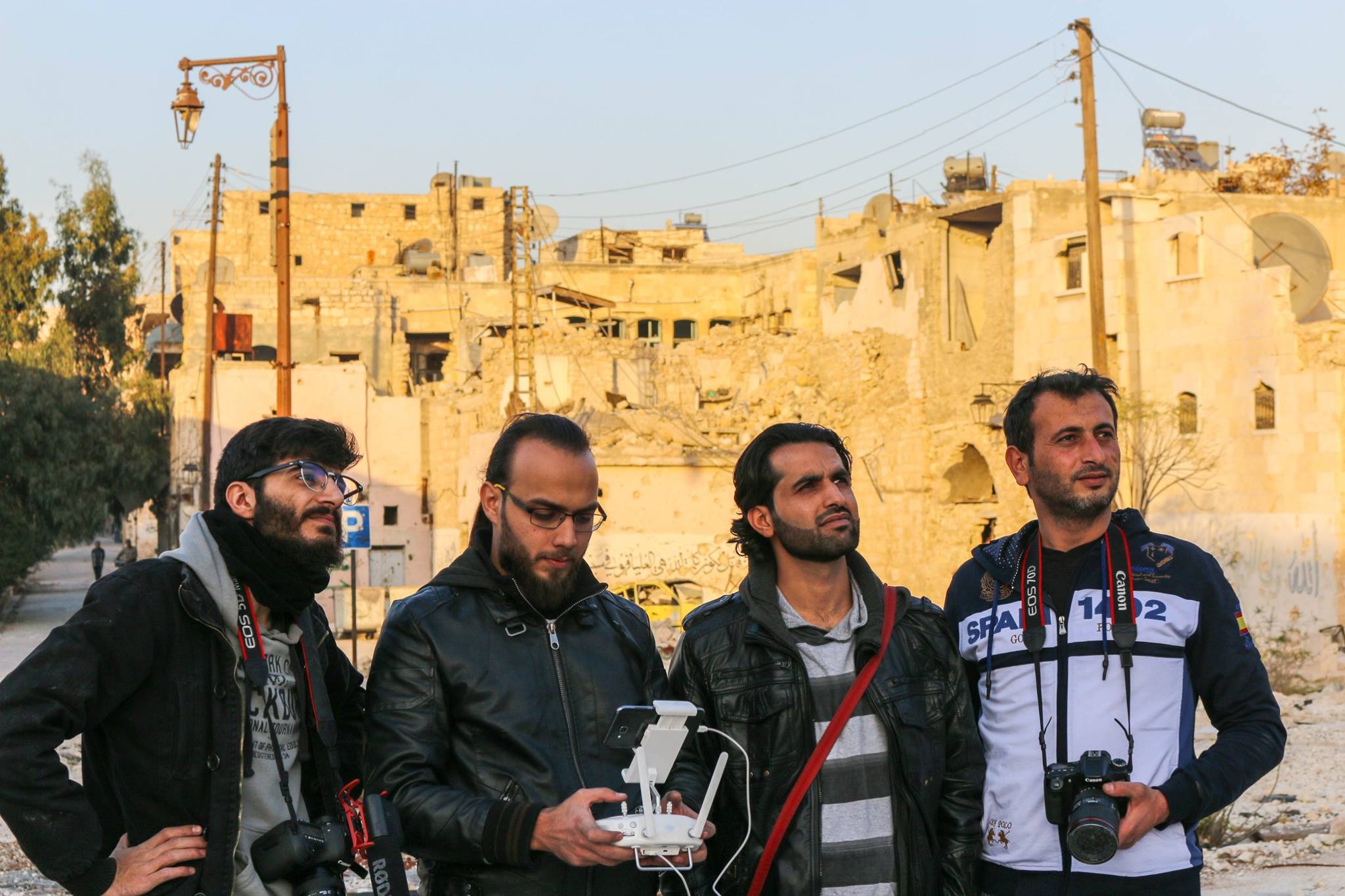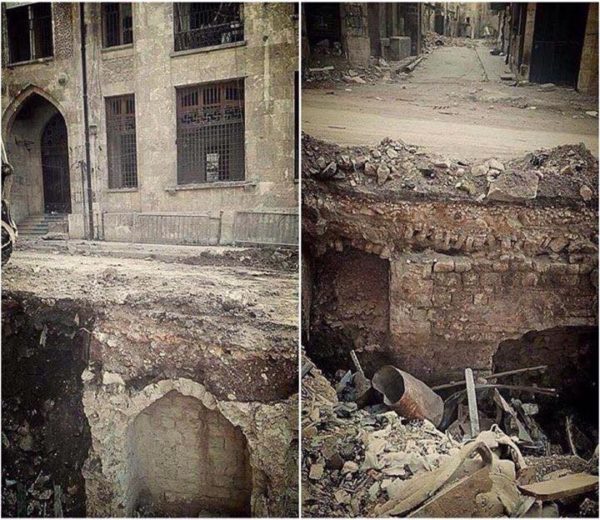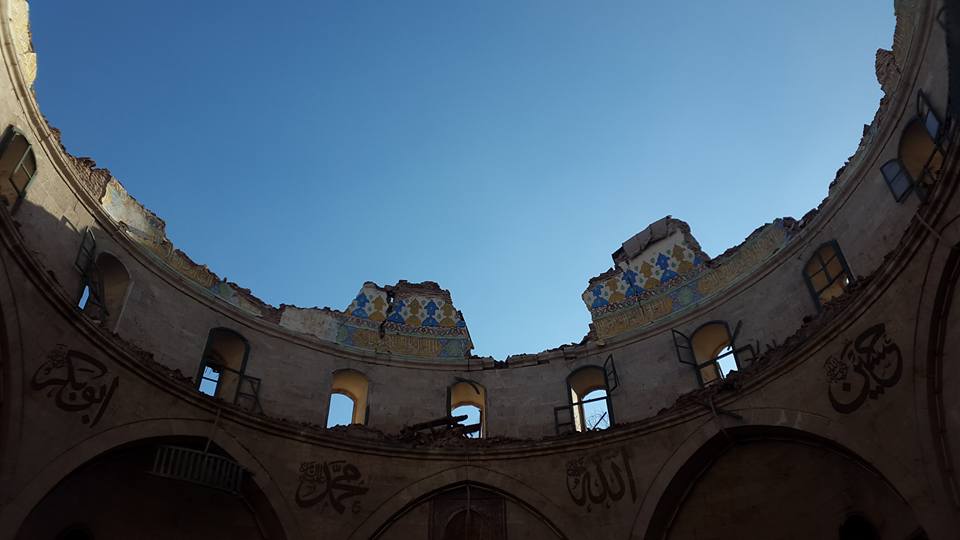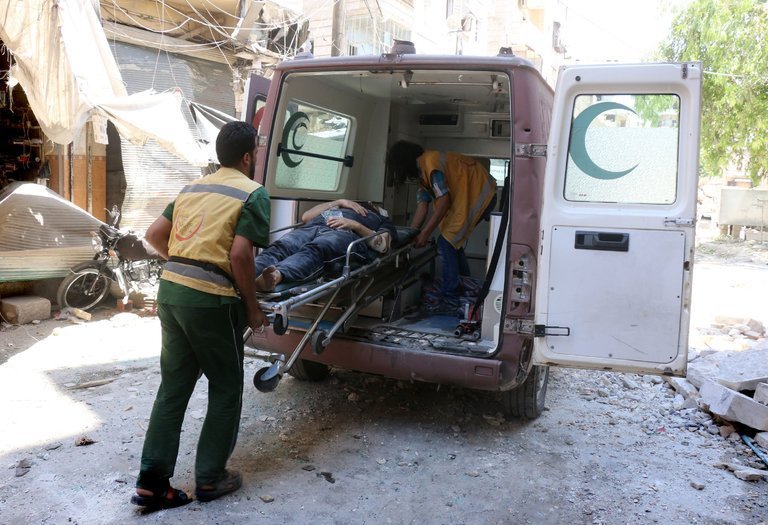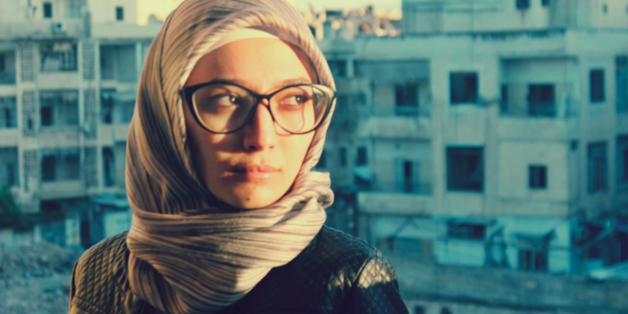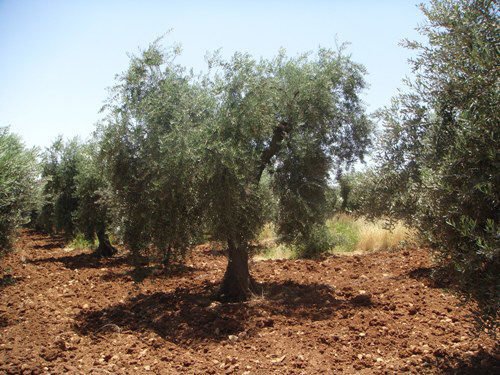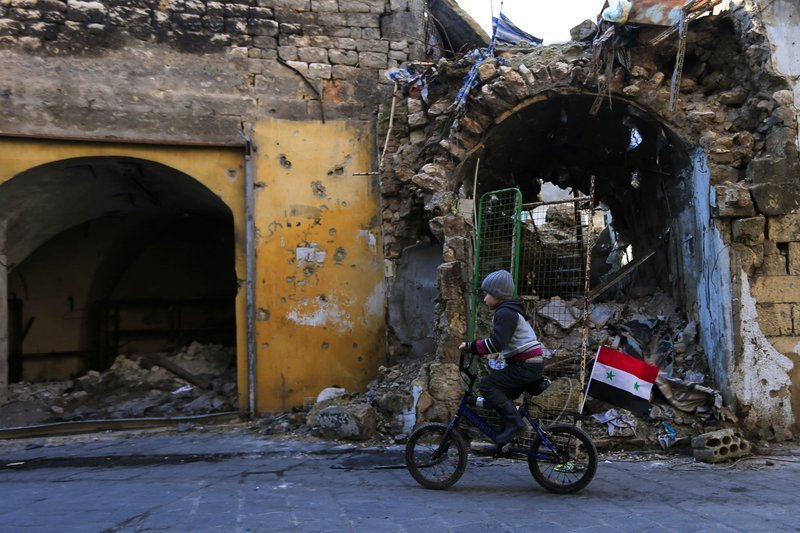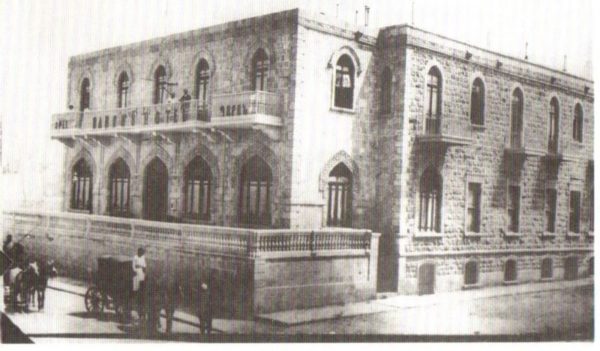Photos taken last Friday, February 17, 2017 by Saleh Zakkour show hollowed halls of Khan Al-Nahasin, previously inhabited by coppersmiths at work. The street sign displays the name Adolphe Poche, homage to the Belgian consul of Austrian origin as well as the House of Poche located in the khan. Born in this historic house linking centuries of European travelers and diplomats to the Middle East, the late Madame Jenny Poche, daughter of businessman George Marash and the daughter of Adolphe Poche, most recently inhabited the house. [1] According to an interview with Madame Poche from the summer of 2011, her great-grandfather, a crystal merchant, first arrived in Aleppo from Bohemia in the early 19th century.[2] The house itself dates back to the 16th century, even before the arrival of the Poche family, when it first housed the Consul of Venice.
read moreFebruary 2017
All posts from February 2017
Drones Over Aleppo
by The Aleppo Project on February 23, 2017Shattuck Center Fellow AlHakam Shaar and former SPP Assistant Professor Austin Choi-Fitzpatrick have written an article for Al Jazeera on how drone technology is being used in Syria.
The article looks at competing media uses of drones, while examining a particular grassroots initiative called Life in Aleppo.
“Drones are not only powerful tools that enable citizens to challenge official news reports, they also provide a completely different perspective on what is happening in Syria,” said Shaar. Choi-Fitzpatrick, who is writing a book about drones and other protest technologies, notes that what is happening in Syria is not new. “Activists around the world have used drones to gather information and monitor situations on the ground,” he said.
You can read the article here.
read moreOld Aleppo Underground
by The Aleppo Project on February 20, 2017Recent photos of ruins found along Al-Mutanabbi Street (Talaat Al-Bnouk) unearth claims of an ancient underground city. The ruins are located to the west of Sabaa Baharat Square and north of Old Aleppo’s Decumanus connecting the Citadel to the Souq Al-Madina, as we marked on Wikimapia.[1] There is discussion as to whether these ruins date back to Hellenistic or Roman times, or whether they are simply the remains of what once were the lower levels of former buildings submerged under a paved road in the 1930s.
read moreRemnants of Al-Adiliyyah Mosque in Aleppo
by The Aleppo Project on February 17, 2017Featured on Humans of Aleppo #HoAHistory, group member Muhammad Sle posts recent photos of Al-Adiliyyah Mosque along with historical facts. Built between 963 AH/1555 AD and 965 AH/1557 AD, according to disputing sources, Muhammed describes the mosque’s cylindrical minaret with the length of the side measured at 15.6 meters, built in the square-shaped Ottoman style. He notes the courtyard’s rectangular shape with two entrances, one facing east and one west, and a central basin of water for ablution.
read moreThe Last Days in Aleppo
by The Aleppo Project on February 16, 2017Karam Al-Masri captured the atrocities taking place in besieged Aleppo until the very last moment when he arrived with evacuation buses in rebel held territory. Documenting the situation with his camera was one of the only things that would give him a reason to live. Now in exile in Istanbul he remembers with Rana Moussaoui the last moments spent in Aleppo.
For the full article click here.
The Aleppo Project had interviewed Karam Al-Massari back in 2015 about his experience of being a news photographer during the conflict.
read moreReport Rebuts Russia’s Claims of Restraint in Syrian Bombing Campaign
by The Aleppo Project on February 13, 2017The Atlantic Council’s report released today, Breaking Aleppo, features evidence of the siege of Aleppo using critical methods of investigation including satellite images, social media, and footage from security camera videos as well as the Kremlin-supported television network. In the NY Times article Report Rebuts Russia’s Claims of Restraint in Syrian Bombing Campaign, Michael Gordon brings attention to the release of the report, noting the analysis of Russian operations in Aleppo provide evidence against Kremlin claims of restraint.
read moreThese are the Moments of Aleppo’s Demise that I will Never Forget
by The Aleppo Project on February 9, 2017Lina Shamy shares slips of her diaries about her time in Aleppo. She maps out the most important changes in the history of the city in the last six years: the revolution, the oppression, the division of the city, the besiegement and the latest evacuation. The memories she experienced and will never forget are quite similar to the memories many Aleppians had to carry out with them leaving their city.
Read her story here.
read moreThe Fate of Olive Branches in Syria
by The Aleppo Project on February 7, 2017The olive tree is the most important symbol of life and peace in the Middle East. It has been so central to daily life for thousands of years that it has a symbolic and practical weight beyond all other trees. It is mentioned in the Koran, the Bible and the Torah and its myth of origin is shared among the faiths. Adam’s son, born after his parents were expelled from the Garden of Eden, was allowed back to retrieve three seeds from the Tree of Knowledge. From these seeds grew the olive, the cypress and the cedar.
read moreAP Top News: Rebuilding shattered Aleppo will take billions – and peace
by The Aleppo Project on February 6, 2017With an eye to the future, as well as recent photos and 360 video of the city published on Thursday, February 4, the Associated Press (AP) reports on the conversation surrounding the reconstruction of Aleppo. In their piece Rebuilding shattered Aleppo will take billions – and peace, Bassem Mroue and Sarah El Deeb note, on the one hand, the great risk posed by moving forward with reconstruction without a peace deal in place and, on the other hand, the urgent need to form rebuilding plans for the future of Syria.
In considering the risk, AP quotes Aleppo Project Fellow AlHakam Shaar who stresses the need to bring home exiled Aleppians, saying, “Any rushed reconstruction is dangerous and is likely to cut out the owners or the ex-residents as well.” Moreover, without a peace deal, in addition to excluding former inhabitants from the reconstruction process, the report notes that Western nations would not directly support support the government.
read moreHotel Baron Revisited
by Yahya Al-Abdullah and Nora Palandjian, The Aleppo Project on February 3, 2017The first grand hotel of Aleppo, the Hotel Baron is remembered by Aleppians and the world alike for its historical glamor. Founded in 1911, the Baron is known for its famous clientele, including Lawrence of Arabia, Agatha Christie, President Theodore Roosevelt, and President Gamal Abdel Nasser among others. Located on the front line and featured in a number of articles since the start of the war, the Baron was most recently the subject of a BBC Outlook podcast with Mary Mazloumian of the family who founded the hotel. The podcast tells the history of the Baron’s extravagant opening as well as its more humanitarian spirit, with the Mazloumian brothers hosting those fleeing war from the Ottoman Empire.
read more The Aleppo Project
The Aleppo Project